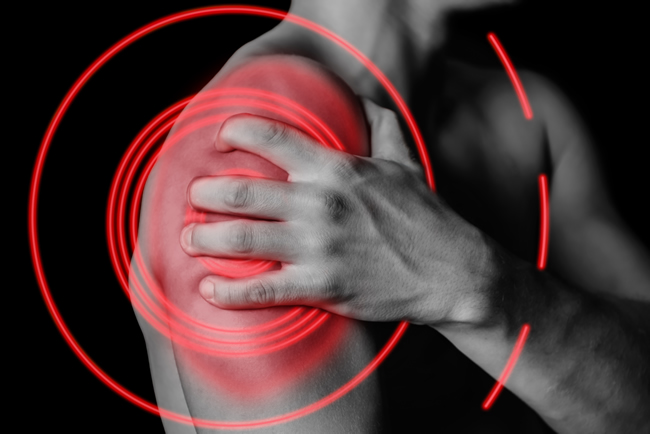
As the popularity of Crossfit has risen over the past several months, so have the number of workout related injuries coming through office. I love the crossfit concept and think it is a great way for participants to get and stay in shape while becoming part of an active community.
Today we are going to talk about shoulder injuries and pain as they pertain to crossfit; specifically why they happen, and how you can treat them while never missing a WOD.
Understanding Your Joints:
Your shoulder is considered an open joint. Like your hip joint, the shoulder is a ball and socket joint, meaning it’s able to move 360 degrees. While the joints are similar in classification, the hip is a much more stable joint due to bone constraint and the fact that it is a much deeper ball and socket joint than the shoulder. Since the shoulder is more of an open joint it becomes 100% reliant on muscles connected to the ball for use, function, and most importantly limitation.
The Cause:
Anytime the shoulder becomes fully extended the joint is at its weakest and least stable point, increasing the possibility of injury. The kinds of moves that would put the shoulder in this position would be the apex of a kettle bell swing, several of the clean and jerk type movements, kipping pull-ups, that kind of thing. Keeping this in mind we are going to look at the kinds of injuries now that commonly occur.
3 Injuries to Look Out For:
1. Bursitis
Bursitis is what I consider to be an entry level injury, meaning it’s usually the first stop on the “degeneration train”. Bursitis is an inflammation of muscles on and around the rotator cuff. This makes sense since the primary cause of bursitis is repetitive minor impact on the shoulder. As a result of the inflammation mild to sever pain occurs.
2. Labrum Tears
Surrounding the socket of the shoulder is a structure called fibrocartilidge. The fibrocartilidge’s job is to act a bumper that the ligaments in the shoulder connect to. This increases the stability of the joint and helps to guide movement. When the shoulder becomes over extended this protective structure can begin to tear resulting in intense pain, and destabilization of the joint.
3. Rotator Cuff Tears
The rotator cuff is a collection of muscles and tendons faced with the task of keeping your shoulder in its socket. The lead cause for injuries to the rotator cuff are repetitive overhead motions, sound familiar? As we age the rotator cuff becomes more susceptible to injury as it degenerates. Rotator cuff tears may start off as a dull pain but will worsen over time and in extreme cases may become a surgical case.
Treatments:
If you think you are experiencing one the above injuries don’t fret. There is a lot that can be done to get you off the bench and back in the game. The earlier you can get in for treatment the better, but let’s look at some of the most effective treatment methods.
1. Inferential Current (IFC) Therapy
IFC Therapy is the process of passing electricity through the muscles at various frequencies, causing the muscles to rapidly contract and relax. This treatment is painless, and very effective in reducing inflammation levels, which in turn reduces pain. IFC is a great option for dealing for bursitis or general preventative maintenance. For non-acute pain cases I recommend 1-2 treatments a month depending on how active the individual is.
2. The Graston Technique
The Graston Technique involves breaking down muscular tissue to accelerate the body’s natural healing and rebuilding process. These specialized tools result in a very effective but more intense treatment, and can be painful depending upon the extent of the injury. The effectiveness of the Graston treatment is dependent on the frequency of treatment. It’s not uncommon for Graston patients to come in 2-3 times a week for up to 3 weeks, as the treatments build upon each other.
3. Therapeutic Massage
Therapeutic massage is different than a traditional Swedish massage in that it incorporates active release techniques and physical therapy. This helps to heal the the muscles around problem joints by reducing inflammation and muscular adhesions. Therapeutic massage is less intense than Graston, but often times more effective for those looking for a preventative treatment.
4. Supplementation
It’s important that you give your joints what they need to repair themselves. All to often I see athletes get so focused on protein powders and recovery drinks that they overlook the building blocks of structural health. I always recommend a good joint health supplement to my clients. I use Kaprex by Metagenics, but I encourage you to work with your provider to find something that is right for your situation.
There you have it. The crossfit community is a great place that combines workouts with education and support, which is what makes it so effective. Injuries happen, but that’s a part of life and they are treatable if you want to do something about it. As always the goal here is patient health and keeping you doing what you love instead of on the injured list.




About The Author: Kimberly Gerbers
More posts by Kimberly Gerbers